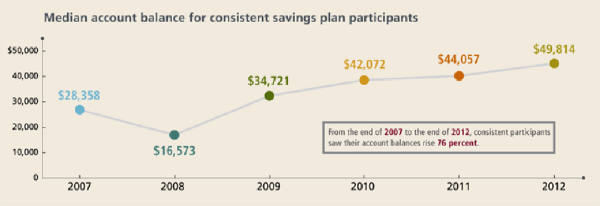
Given the recent trends, you may have started getting concerned about investing your savings in the stock market. Here are a few tips to help you remain confident, keep on track, and stay committed to investing for your retirement goals.
Remember that drops in the stock market are common.
Short-term market declines are a natural part of the investment process and shouldn't affect your long-term financial goals. Since the beginning of 2009, the Standard & Poor's (S&P) 500—the index of the 500 largest U.S.-based stocks and a benchmark for many stock mutual funds—has fallen at least 5% eleven times but has risen about 130% overall.1
Diversifying can help lower your risk .
Asset classes often don't move in tandem with one another. Diversifying—or spreading money across a variety of investments—doesn't assure a profit or protect you against market losses, but it can help minimize investment risk.
Continue your UTSaver plan contributions.
By routinely and systematically contributing to your UTSaver DCP and TSA plans, you can help lower your portfolio's overall market risk. In addition, consistently contributing through various market cycles allows you to "even out" the prices you pay, because you purchase more shares (or units) when prices are low and fewer when prices are high. The following chart demonstrates how consistent savers can come out ahead, even though the market fluctuates.

Source: Employee Benefit Research Institute, "What Does Consistent Participation in 401(k) Plans Generate? Changes in 401(k) Account Balances, 2007-2012;" July 2014.
Stay the course.
Stocks, even with their volatility and risks, offer the potential for significant long-term gains that can help you meet your retirement savings goals. Talk to a retirement plan representative to help you evaluate the diversification in your plan. Staying invested and maintaining an appropriate strategy can help you manage market volatility.
1 Return of S&P 500 from January 1, 2009 to October 31, 2014.
*Courtesy Lincoln Financial

